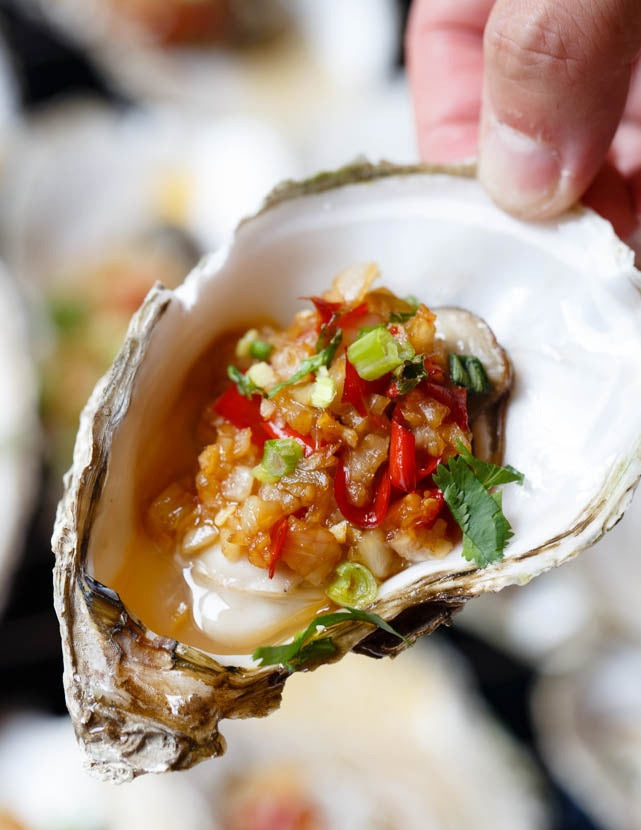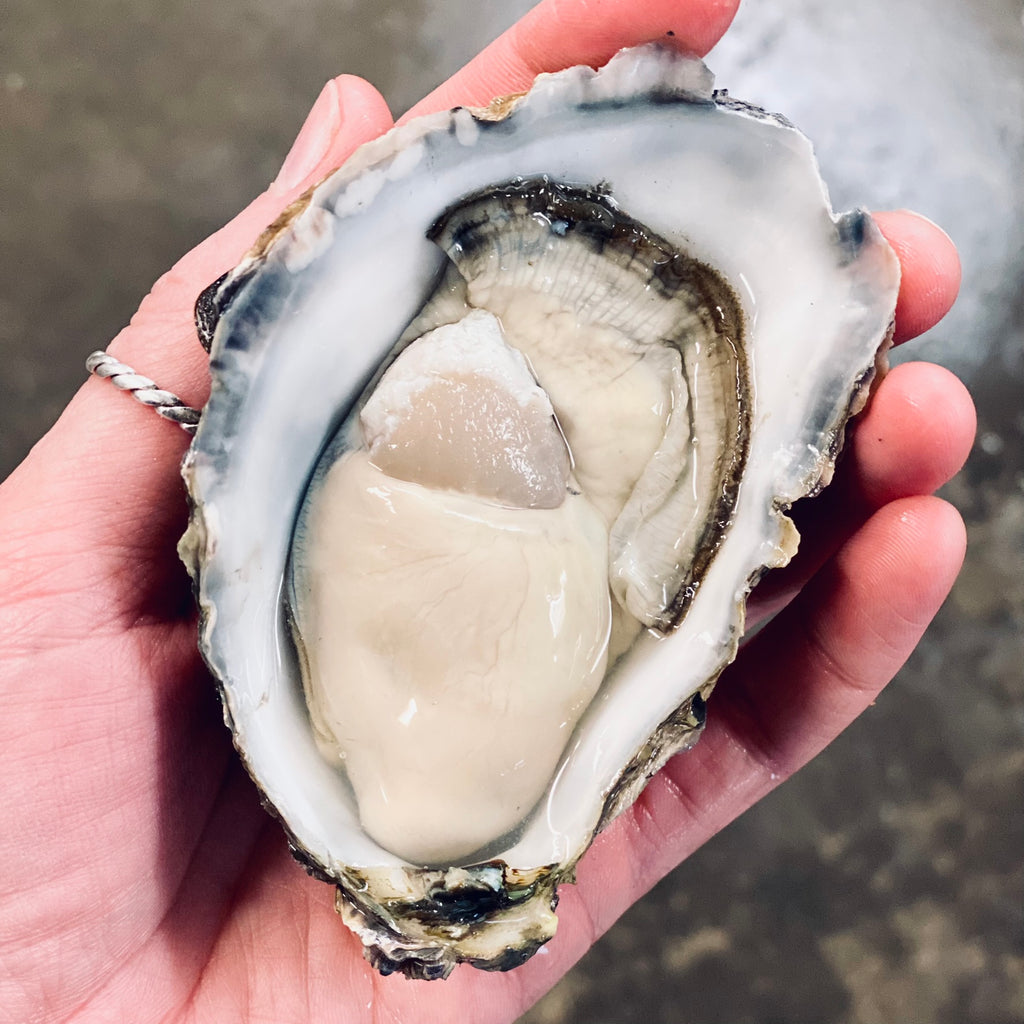Recipe: Oysters with Zesty Japanese Vinaigrette
Recently we shared our Oyster Mignonette recipe, and our readers loved it. This month we’ve decided to put a Japanese spin on our classic oyster recipe with a zesty Japanese vinaigrette.
Ingredients:
- 12 oysters, shucked
- 1 garlic clove, minced
- thumb-sized piece ginger, finely chopped
- 2 tbsp mirin
- 1 tbsp soy sauce
- 4 spring onions, finely sliced
- 1 red chilli, finely chopped
- 2 tbsp sesame oil
- Bunch chives, finely chopped, to serve
Method:
To make the sauce, mix all the ingredients together in a small bowl. Drizzle the sauce over the oysters, then sprinkle with chopped chives and serve straight away.

The salty and sweet flavours in this dressing are the perfect complement to oysters, either Pacific or Sydney Rock. We love this recipe with the creaminess of Sydney Rock Oysters but for a genuine Japanese experience, Pacific Oysters are more accurate, as they originated in Japan.
Pacific Oysters are endemic to Japan and were introduced to Australia as early as the 1940s. Historically, they’ve been cultivated in Hiroshima, Japan since the 1500s but shell mounds prove that they’ve been eaten since prehistoric times. A hardy species that can displace native varieties, they are larger than Sydney Rock Oysters and are grown locally in Port Stephens. Their ability to displace native species has led to Pacific Oysters being listed as a Class 2 Noxious Fish in all NSW waters except Port Stephens under the Fisheries Management Act 1994 (Schedule 6C), in order to protect the native Sydney Rock Oysters. They are however, the most cultivated and commercially important oyster in the world.

Oysters are a healthy option, considered a superfood with high levels of protein, omega-3s, zinc, selenium, magnesium, calcium, iron and vitamins A, B1, B2 and C. They’re also low in cholesterol and contain a chemical called tyrosine which can increase dopamine levels. Super easy to prepare, they scream sophistication and luxury despite having once been considered a staple food of the lower classes during the 19th century.
This recipe calls for mirin, a Japanese sweet rice wine that is made from steamed and fermented rice. It is very sweet and gives food a shine and good aroma. If you don’t have any, or wish to avoid alcohol, (true mirin contains a 14% alcohol volume), you can substitute it with sugar and water in a ratio of 1:3. You can even use honey or agave syrup. All this delicious sweetness, set off with the zesty flavours of chilli and ginger perfectly complement the creamy flesh of the oysters. Served with a cold sparkling wine or champagne, this dish makes sophisticated entertaining a breeze.
We love seeing the delicious creations that our audience come up with! Share your versions of this recipe on social media and don't forget to tag us @dawsonsoysters.

